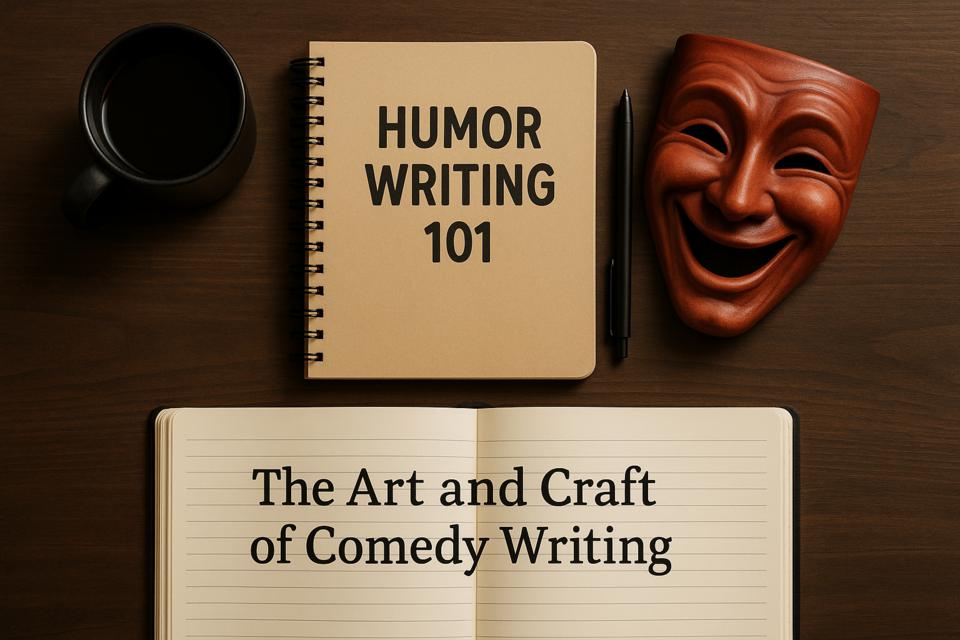Manuscript Formatting when Writing a Novel
-
Printing material -- Paper should be standard 8.5 x 11, 20-pound white bond.
-
Font style and size -- Use a double-spaced, non-proportional font, such as Courier. Non-proportional means that all of the letters on the page take up the same amount of space. Always use 12-point type size for everything except references; this is the standard size that is considered acceptable by all publishers. Note: Do not use boldface, or deviate from the original font style.
-
Margin allowances -- Leave a 1-inch margin on all four sides of the page. This ensures the manuscript is in readable, editor-friendly form, whereby each page consists of approximately 250 words per page.
-
Writer's block -- Within a block at the top left-hand side of the first page, using single-spacing, write your name and address. You are not to include copyright information or a date, for this is likely to change over time, as you submit multiple drafts. In the aforementioned block, you should also include an approximate word count, along with a qualification for the genre of the work, e.g., novel, novella, or short story.
Note: These qualifications are based upon word counts. As a general guide, a short story has fewer than 7,500 words; a novelette, between 7,500 and 17,500 words; a novella, 17,500 to 40,000 words ; and a novel, anything above 40,000 words.
- Editor's notations -- Below your writer's block, leave several blank lines for the editor to make his or her notations.
-
Title page -- Somewhere near the middle of the page, you will need to include your working title and name (centered).
-
Placement of page numbers -- The proper format for including page numbers tends to be a source of much debate. While some believe they should be on the left, others argue for the right. And, further compounding the confusion, is whether 'Page 1' should go on the very first page, or that which is actually the second page. Note: We will leave where and how you include page numbers to your own discretion; however, it is important that you include them in a consistent manner throughout the entire manuscript.
-
Symbols between scene breaks -- To make a clear distinction between the end, and beginning, of new scenes, include a centered # (pound) sign in the line following the end of the last paragraph in the scene.
-
Copy editing marks -- Make your copy editing instructions stand out from dashes (used to separate interjected clauses form the rest of the text) by using two individual (--) hyphens as opposed to one long hyphen(--). Italics should be noted by underlining the word, as opposed to actually italicizing it.
-
Hyphenating -- Rather than breaking-up words, (hyphenate) at the end of lines, it is best to space over the word so that it appears in its completed form on the next line.
-
Spell check -- And though it should go without saying, always remember to run a spell check on your work. Yet, more than just relying on spell check to catch all your errors, you will want to also read through your work to eliminate any misused words that spell check fails to catch. There is nothing more distressing than coming across a misspelled word within an otherwise compelling read.
B. Style and Tone
The Three Cs: High-quality writing, whether for a manuscript or an online course, needs to adhere to the three Cs: clear, concise, and complete.
-
A clear document is characterized by direct, unambiguous language.
-
A concise document uses the minimum number of words to convey a point.
-
A complete document introduces all terms, concepts, and procedures required for understanding a technology, and using it effectively.
-
Stick to a consistent tense, (e.g., "She runs down the block," versus "She ran down the block."
-
If you use slang or technical terms, you need to define them upon first use.
-
If you use abbreviations, you need to spell them out upon first use.
-
Choose a universal pronoun, e.g., he or she, he/she, etc., and adhere to it throughout the manuscript.
C. Importance of Adhering to Proper Manuscript Form
As a whole, manuscript style guidelines are important, for they provide a standard to which all similar works need to adhere. Thus, they ensure consistency (making material easier to read and understand for the reader), and uniformity, regardless of the story genre.
While there are a host of style guidelines from AP (Associated Press), to MLA (Modern Language Association), the one that is most often relied upon in the world of book publishing is that of the Chicago Manual of Style.
Citing specific punctuation, grammar, and copy editing style usage, the reference book is an invaluable tool to employ throughout your writing process. As there are far too many elements to cover within this one article, the style manual is your lifeline, in terms of producing a publisher-friendly manuscript.
Not only does it take the guesswork out of whether or not to abbreviate, hyphenate, or close up certain words, it also allows you to properly present your material (layout and format) when approaching publishers with your completed work.
Take a moment, and put yourself in the position of the representative from the publishing house: Wouldn't you respond more favorably to a well-laid-out manuscript, that was not only simple in form, (the better to accentuate the quality of the writing), but also close to being ready for publication?
The time and effort saved on having to clean up, and properly format, a manuscript means a great deal to a prospective publisher, who is responsible for justifying costs and keeping projects on a tight budget.
Thus, in order to give yourself a solid advantage (or not set yourself up, at the outset, for a disadvantage), it is in your best interest to work in tandem with a specific manuscript format from the very beginning of the process.
While the concept of storyboarding seems easy enough to understand, it is important for the aspiring novelist to fully comprehend the purpose in employing this tool, as well as the optimal ways in which to utilize these tools, to aid you in your writing process.
What exactly is a storyboard?
Essentially, a storyboard, commonly referred to as an outline, blueprint, or map, is a writing tool intended to help you develop your story in a streamlined manner.
With a non-stop whirlwind of ideas running through your mind, storyboards prove to be immensely helpful tools, for they allow you to filter through your barrage of options, and identify those most pivotal to your principal focus.
When attempting to narrow down your choices for story development, it is best that you make careful selections, based upon whether they will contribute to the flow and relevance of the story.
In short, storyboards are useful for the following reasons:
-
Providing visual imagery, the storyboard enables the writer to organize and focus his/her novel and, as such, compile a table of contents based upon the material selected.
-
Presenting a full overview of the individual components contained within the novel, the writer is more likely to make content selections based upon resources, such as time and available energy levels.
-
Highlighting the tone and nature of each section of the story, the storyboard allows the writer to select an appropriate writing technique(s) for use throughout the entire novel.
B. Storyboards and the Writing Process
When does storyboarding come into the novel-writing process?
Is it better to create the storyboards prior to writing the novel, or intermittently throughout the writing process? Of course, the answer to this question remains best left to your own personal preference. However, many have found it incredibly helpful to invest time in the creation of storyboards prior to moving on to the writing phase.
In what ways do storyboards contribute to the writing process?
Initially you may begin with a host of random ideas, characters, settings, and images you want to include in your novel. With the use of the storyboards, you can play around with different combinations of elements from each group, to the point where you discover the specific groupings that work best with one another.
Ideally, in helping bring images to life, these boards will serve as the backbone for the formation of, not only your outline, but your novel as a whole.
Is there one right way to create the storyboards for my novel?
While there is no standard way, there is a commonality inherent in most, whereby each storyboard represents a critical aspect of the story.
Imagine a series of large-sized white poster boards, in which each one represents a pivotal plot point in the development of the story. With the benefit of magazine clippings, drawings, photos, and/or other images, the novelist can create a visual illustration composed of elements deemed desirable for inclusion within the novel.
Are there a set number of storyboards I should create?
No, there is no set number; rather, the number of boards you create reflects the complexity of your story, and the number of pivotal key scenes/plot points.
While you will not have a board for each scene, you should consider making one for each significant scene, for it will force you to assess the degree to which it is truly necessary, or disposable, in view of the story as a whole.
Further, having storyboards for all of the stand-out scenes, you will then be able to organize all into a sequential line-up of scenes and images.
C. Time Sequences, Gaps, and Holes
When reviewing the key scenes you now have in art form, you may find there may be holes in your story. This is another reason to use storyboards, for they not only help indicate the information you want to include, they also show where scenes are missing, and/or places where you may need to incorporate additional material, based upon the lack of depth or clarity to a particular scene.
As a guideline for time lines, storyboards help a great deal, in terms of laying out specific information, such as chronological events, character studies, and background settings.
With such elements in place, it becomes increasingly easier to write the manuscript in a crisp, clean manner.
Should you wish to invest in a specialized software program, designed to assist you with all aspects of the writing process, including that of storyboarding, there are a wide range of credible options from which to choose.
In addition to storyboard production, the core features of these programs also include: automatic back-ups of work; ability to track progress made per writing session; creation of identifiable headings for each section; and editing proficiency.
Allowing the writer to focus on the creative aspect of the novel, software writing programs purport to manage the more technical/visual side of the process, e.g., charting, outlining, restructuring, and, yes, even the dreaded formatting.
Based upon the writer's comfort level with technology, a software program may be quite beneficial. However, for old-school writers, who are more inclined to write long-hand than keyboard-style, a computer-aided tool -- even if employed only for storyboard purposes -- may be more of a headache than a help.



























